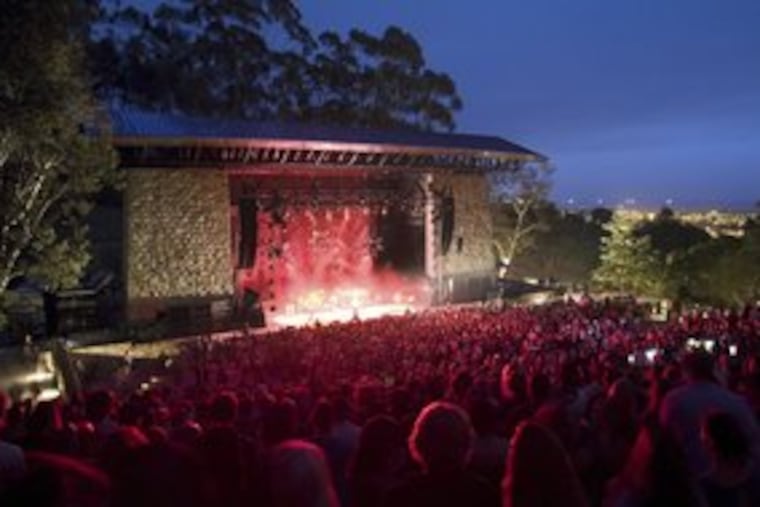
When Dan Snyder graduated from Silverton High School in Oregon in 1936, he spent a month waiting to turn 17, the minimum age for applying to the Civilian Conservation Corps.
The corps, a first-term accomplishment of President Franklin D. Roosevelt's New Deal, put unemployed young men to work across the country building roads, structures and trails in city parks and national forests in the midst of the Great Depression.
In July 1936, Snyder left his 11 brothers and sisters and his home, where there wasn't much food to go around, for the corps and Oregon's Mount Hood National Forest.
"They had meat and potatoes and gravy and bread and butter and water and coffee and milk to drink, desserts of canned peaches and canned pineapples," recalls Snyder, who will turn 89 next month. "Nobody went away hungry."
On Saturday, he and others plan to gather in the Mount Hood forest to celebrate the 75th anniversary of FDR's New Deal and the work programs it created. It is just one of many events organized by the National New Deal Preservation Association.
Like many New Deal projects, the trails Snyder helped create in Mount Hood National Forest - as well as the Timberline Lodge built there through the Works Progress Administration (WPA) - still retain a hold on the community. Besides giving Snyder employment - and a $25 check to send home every month during his four years in the corps - the work programs provided ways for Americans to explore their national forests and parks.
"It opened up all these campgrounds and recreation areas where there really hadn't been much before," said Sarah Munro, a historian for the Timberline Lodge.
From a balcony during the lodge's 1937 dedication ceremony, Roosevelt touted the building as a success of the government's programs. Constructing it gave the unemployed workers jobs and taught them valuable trades.
"A lot of them were skilled, and a lot of them were unskilled, but by the time they finished working in timber, they were master craftsmen," said Linny Adamson, the lodge's curator.
Since the lodge's dedication, many of its original tapestries and wrought-iron workings have been replaced by employees keeping alive the hotel's traditions.
"We're on the restoration of restoration of restorations," Adamson said.
Last year, the lodge served two million guests, Adamson said. Still owned by the U.S. Forest Service, the lodge attracts nature and movie lovers alike. Exterior shots of the building were used to represent the isolated Overlook Hotel in Stanley Kubrick's 1980 classic,
The Shining
.
"We still show it on Halloween," said Adamson. "That's what a lot of people come for."
Though the Mount Hood lodge thrives, some other projects developed and built by the WPA have struggled.
For a while, the Santa Barbara Bowl, an outdoor amphitheater built in 1936 in California, had to turn away big-name musical acts because the venue had become too outdated to accommodate them, said Sam Scranton, executive director of the Santa Barbara Bowl Foundation.
The roof was particularly problematic because the amount of weight it could hold was limited.
"Two years ago, Tom Petty could not play because he had 29 tons of equipment," Scranton said. "We felt comfortable with only 20 tons."
Now, after a $22 million renovation that began in 1995, the roof can hold 100 tons of equipment, Scranton said. The amphitheater has also been updated with permanent restrooms, improved areas for food vendors, and a deep storm drain to prevent water from running over the stage. (In 1936, the bowl was built in the middle of what was then a dry creek bed.)
Similar upgrades are taking place in New Orleans' French Market neighborhood. There, an open-air farmers market has provided shoppers with their regular ration of navel oranges, okra and watermelons since the Depression.
Though the economy isn't as desperate as it was back then, the market is remodeling its pitched-roof metal sheds to keep up with the times.
"Originally, the sheds were built to accommodate truck farmers," said Ken Ferdinand, whose French Market Corp. oversees development in the area. "Truck farmers are not as plentiful as they used to be."
Ferdinand expects the $7 million remodeling project to be completed by the beginning of the annual Creole Tomato Festival in June.
With the city still recovering from Hurricane Katrina, the farmers market has become a larger part of the city's economic engine, Ferdinand said: "Many of the shopping centers are gone, and we remain."
Just as FDR would have wanted it.